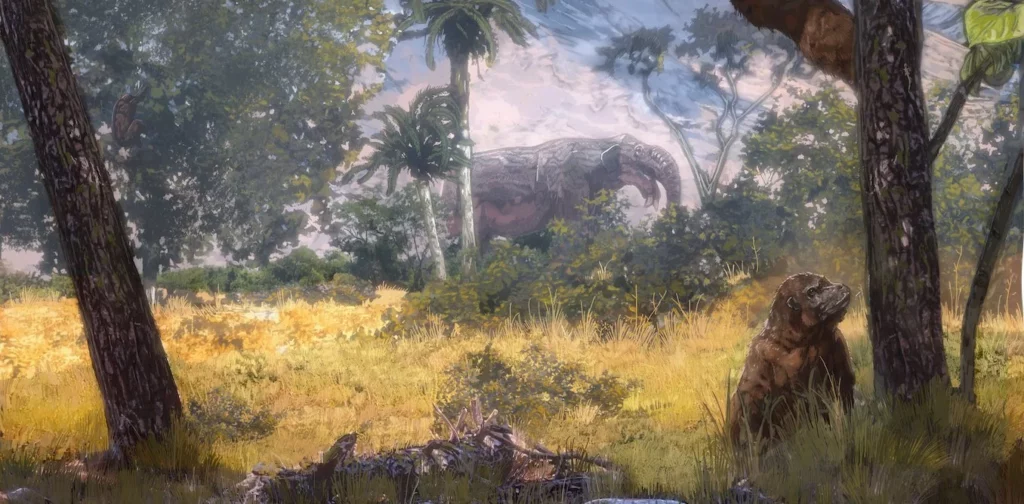Many scientists had speculated that the first apes that emerged in Africa more than 20 million years ago subsisted on fruit and lived in a dense canopy within a forest ecosystem that spanned the continent. However, two new studies suggest they actually ate leaves and lived in a drier environment of woodlands of varying densities, which means we should rethink our understanding of early ape evolution.

Paleontologists, primate experts, and plant scientists discovered new evidence that pushes back the origin of tropical ecosystems dominated by C4 grasses – named for the photosynthesis they use – by over 10 million years. By doing so, they established a link between the emergence of C4 grasses and the ancestors of all apes living today.
“We have this ape with an upright back. It must be living in forests and it must be eating fruit. But as more and more bits of information became available, the first surprising thing we found was that the ape was eating leaves. The second surprise was that it was living in woodlands,” Laura MacLatchy, study author, said in a statement.
Looking at Africa’s habitats
Researchers have often argued that equatorial Africa was covered by semi-continuous forests during the early Miocene (between 15 and 20 million years ago) and that open habitats with C4 grasses didn’t expand until about 8-10 million years ago. However, some studies have suggested C4 grasses were in East Africa 15 million years ago.
Now, an international team of experts wanted to establish whether this was an irregularity or a hint to the actual diversity of ecosystems that happened during the early Miocene. This would have big implications for understanding the features of early apes and why there are tropical C4 grasslands in Africa and around the world.
As part of the Research on the Eastern African Catarrhine and Hominoid Evolution (REACHE) project, the team did research at nine Early Miocene fossil sites in Kenya and Uganda. They examined fossils of the oldest, clearly documented ape, Morotopithecus, as well as fossils of other mammals and samples from ancient soils and plants.
By looking at the fossilized teeth of the ape, the researchers were able to determine that it primarily consumed leaves rather than fruit. Additionally, they discovered a vertebra and noted that the femur was shorter in relation to the body size, indicating that the ape had an upright posture. This suggests it likely climbed on top of the trees to access leaves.
The researchers also found that the plants living in this landscape lived through seasonal periods of rain and of aridity. This means that for at least part of the year, apes had to rely on something other than fruit – which then indicates that Morotopithecus lived in an open woodland disrupted by broken canopy forests formed by trees and shrubs.
“What we found was thrilling, and very different from what was the accepted story,” Caroline Strömberg, study author, said in a statement. “We used to think tropical, C4 dominated grasslands only appeared in the last 8 million years or so. Instead, data showed that C4 dominated grassy environments appeared over 10 million years earlier.”
The two papers were published in the journal Science and are accessible here and here.









